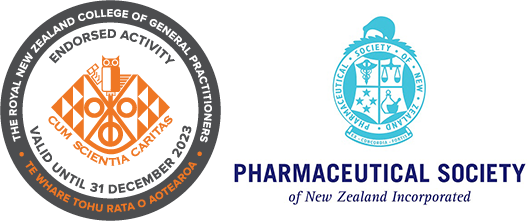Phenobarbitone tablets

The funded brand of phenobarbitone tablets is changing and all patients will need to change brands to continue taking phenobarbitone tablets. To ensure patients with epilepsy transition safely, prescribers are encouraged to discuss changing brands with their patients as soon as practicable, so the required pre-switch phenobarbital serum level measurements are not missed.
Key points
- Patients taking phenobarbitone tablets for epilepsy require alerting to the impending brand change and required actions.
- Two appointments with a healthcare provider are needed: at one month before and one month after the brand change.
- Serum phenobarbital testing is required to check that concentrations remain at the same level before and after the brand change. A total of four tests is recommended, to be performed:
- three weeks prior to the change
- within the week prior to the change
- within the first week after the change
- one month after the change.
- The brand change necessity may provide health professionals with an opportunity to review patient clinical management.
- Additional considerations are required for people taking phenobarbitone who are pregnant or of child-bearing age; obtain timely neurologist advice to inform management approach and refer to advice on HealthPathways.
- Funding is available from Pharmac to avoid extra patient cost associated with this change.
- Waka Kotahi recommends that patients consider a voluntary driving stand-down period of eight weeks following an antiepileptic medication brand change.
Background
Phenobarbitone (PSM) 15mg and 30mg tablets, supplied by API Consumer Brands, are being replaced with Noumed Phenobarbitone 15mg and 30mg tablets.
** Noumed Phenobarbitone 30mg tablets are funded and have been available since 1 July 2023 (and the PSM brand is no longer available or funded). Noumed Phenobarbitone 15mg tablets have now received Medsafe approval, and will be listed on the Pharmaceutical Schedule from 1 March 2024.
Supplies of PSM Phenobarbitone 15 mg tablets are expected to run out in May 2024, so people taking these will soon need to start the process of changing from the PSM brand to the Noumed brand. **
The closure of the API manufacturing facility has necessitated this brand change for phenobarbitone tablets. Note that the supply of phenobarbitone injection and powder formulations will not be impacted.
Phenobarbitone tablets are sometimes used “off-label” for premedication and sedation, and for conditions other than epilepsy, including anxiety, sleeping disorders and cyclic vomiting syndrome. Phenobarbitone tablets can also be used to manage palliative care, assisted dying, and drug withdrawal/neonatal abstinence.
The advice concerning serum phenobarbital monitoring in this article relates only to people with epilepsy.
Patient group
Around 400 people are dispensed phenobarbitone tablets each year in Aotearoa New Zealand (see table), with most of the dispensing occurring in the community and prescribed by GPs.
Number of people dispensed phenobarbitone since 1 July 2022 to January 20231
Phenobarbitone |
Total |
Māori |
Pacific peoples |
| 15 mg | 60 | 7 | 2 |
| 30 mg | 374 | 30 | 10 |
It is estimated that around 80 per cent of people currently taking phenobarbitone tablets have epilepsy. Many of these patients (most aged ≥65y) have been on phenobarbitone for a long time.1
Recognise vulnerable people
Vigilance is required to ensure people in disability care facilities and aged residential care who are prescribed phenobarbitone are considered.
Monitor for change in therapeutic effect
Phenobarbitone is a UK-classified Category One epilepsy medicine. Hence, clinically relevant differences between different brands of phenobarbitone may occur, despite bioequivalence having been demonstrated and pharmaceutical formulations being the same between brands.2
Although not usual practice, during this brand change it is important for health professionals to monitor serum phenobarbital concentrations in patients with epilepsy, to check that these remain at the same level before and after the medication change.
Testing timeline
Testing for serum phenobarbital concentration should be performed on samples collected at trough (pre-dose) periods and by the same laboratory, to maintain consistency.
Four occasions are recommended for testing relative to the time of the patient changing phenobarbitone brands.3
- Three weeks prior to the change (baseline 1).
- Within the week prior to the change (baseline 2).
- Within the first week after the change – ideally four to 10 days after the first dose of the new brand.
- One month after the change.
Prescribers will need to monitor the results of these blood tests.
Testing outcomes
The formal therapeutic range for serum phenobarbital concentration is derived from group average data, and can differ between laboratories.
Some clinicians may find their patient’s serum phenobarbital concentration is less than the lower limit of this range and therefore considered sub-therapeutic. However, if the patient’s phenobarbitone dose is providing a clinically therapeutic effect and the patient is well-managed, there is no need to increase the dose in order to meet the lower limits of the serum phenobarbital formal therapeutic range.3
A variation of ±10 per cent between the two baseline measurements is considered stable. However, appreciable variation indicates instability and, in this case, a patient will require closer monitoring of their serum phenobarbital concentrations after the brand change, especially early on.3
What to expect if phenobarbital levels are too low or high
Effects of reduced phenobarbital levels include:3
- sleep difficulties
- insufficient clinical effects, including seizure activity.
Effects of increased phenobarbital levels may include:3
- headache
- mood changes
- drowsiness
- sedation.
Once phenobarbital serum levels increase above the therapeutic range, the patient is at substantial risk of adverse effects. Symptoms of barbiturate toxicity vary between individuals but commonly include:4
- difficulty thinking
- decreased level of consciousness
- bradycardia or rapid and weak pulse
- poor coordination
- vertigo
- nausea
- muscle weakness
- thirst
- oliguria
- decreased temperature
- dilated or contracted pupils.
Deaths have resulted from marked respiratory depression, hypotension and coma.
Extra funding provided to help cover costs
Patients will require two appointments with their healthcare provider, one before and one after the brand change, in addition to the testing required to assess serum phenobarbital levels. To reduce barriers and so that patients pay no extra costs associated with this brand change, Pharmac will fund two primary care prescriber copayments for the two recommended appointments and four serum phenobarbital levels for people who cannot access a collection centre where this is funded. Copayment fee waiver forms can be found here.
If repeat monitoring is required for those who have already claimed this funding during the phenobarbitone 30 mg tablet brand change, this will again be funded by Pharmac for the 15mg tablet brand change (ie, for the small number of people currently taking both Noumed 30mg and PSM 15mg tablets).
Pharmac will also pay an early brand switch fee (BSF) as support for pharmacists to discuss the brand change with patients, as well as proactively identify those who haven’t yet discussed the change with their prescriber.
Driving after a brand change
Waka Kotahi New Zealand Transport Agency recognises that health professionals, by consideration of their knowledge of their patient’s medical history and other relevant factors, are best placed to determine patient ability to drive.5 To help with this determination, Waka Kotahi has developed a guide for health professionals on the medical aspects of fitness to drive6, and a Fact Sheet on epilepsy/seizures and driving for patients who drive privately and for work.7
During medication changes or withdrawal of antiepileptic drugs, and for six months afterwards, Waka Kotahi has previously recommended advising patients not to drive. When changing brands of medication, Waka Kotahi advises caution and recommends that patients consider a voluntary driving stand-down period of eight weeks following the change.5,8
Other guidance available
The necessity of a brand change may provide health professionals with an opportunity to review a patient’s clinical management prior to the change if the patient’s epilepsy is not currently well controlled on phenobarbitone tablets. Switching to an alternative epilepsy medicine may be a consideration.
Additional considerations are required for people taking phenobarbitone who are pregnant or of child-bearing age. Obtain timely neurologist advice to inform management approach and refer to advice on HealthPathways.
Health professionals treating patients who are not pregnant or of child-bearing age may also wish to seek guidance on switching epilepsy medicines with a neurologist.
Talking with a neurologist may help clinicians, practice nurses and pharmacists to understand potential issues with a brand change and the need for serum phenobarbital monitoring. This information will also aid in discussions with patients, so they feel appropriately and accurately informed.
Information for consumers, including a phenobarbitone fact sheet and resources on anti-seizure medicines and a variety of epilepsy topics is available from Healthify He Puna Waiora (previously called Health Navigator).
The Māori Pharmacists’ Association Ngā Kaitiaki o te Puna Rongoā also has a non-urgent, free phone line, 0800 664 488, to answer questions whānau have about their medicines.
Acknowledgements
Written by: Gayle Robins, freelance medical writer and regular contributor to He Ako Hiringa resources
Reviewed by: Dr John Mottershead, consultant neurologist at Te Whatu Ora Southern
Content updates
31 May 2023: Updated with the new brand name and availability date of 30mg phenobarbitone tablets (Background section).
12 June 2023: Added statement on obtaining neurologist advice when treating patients who are pregnant or of child-bearing age (Key Points and Other Guidance sections).
3 July 2023: Updated links to Healthify He Puna Waiora resources (previously called Health Navigator).
19 January 2024:Noumed Phenobarbitone 15mg tablets are now approved by Medsafe and will be listed on the Schedule from 1 March 2024. Included mention of serum testing funding and link to the claim form.
References
- Te Whatu Ora. Pharmaceutical claims collection. 2023 (accessed Mar 2023).
- GOV.UK: Medicines and Healthcare products Regulatory Agency. Antiepileptic drugs: updated advice on switching between different manufacturers’ products. 24 November 2017. https://www.gov.uk/drug-safety-update/antiepileptic-drugs-updated-advice-on-switching-between-different-manufacturers-products (accessed Mar 2023).
- Pharmacology and Therapeutics Advisory Committee (PTAC). Record of the Neurological Subcommittee of PTAC Meeting held on 29 October 2021; https://pharmac.govt.nz/assets/2021-10-29-Neurological-Subcommittee-Record-Web-Version.pdf (accessed Mar 2023).
- Lewis CB, Adams N. Phenobarbital. StatPearls. Last update 17 January 2022. https://www.ncbi.nlm.nih.gov/books/NBK532277 (accessed Mar 2023).
- NZTA. Waka Kotahi NZ Transport Agency. Changes to funded brands of epilepsy medication. https://www.nzta.govt.nz/driver-licences/getting-a-licence/medical-requirements/information-for-health-practitioners/changes-to-funded-brands-of-epilepsy-medication-effective-1-october-2019/ (accessed Mar 2023).
- NZTA. Waka Kotahi NZ Transport Agency. Medical aspects of fitness to drive: A guide for health practitioners. July 2014. https://www.nzta.govt.nz/assets/resources/medical-aspects/Medical-aspects-of-fitness-to-drive-a-guide-for-health-practitioners.pdf (accessed Mar 2023).
- NZTA. Waka Kotahi NZ Transport Agency. Epilepsy/seizures and driving. Fact Sheet 17: November 2018. https://www.nzta.govt.nz/assets/resources/factsheets/17/docs/17-epilepsy.pdf) (accessed Mar 2023).
- New Zealand Formulary. Control of the epilepsies. https://nzf.org.nz/nzf_2600#nzf_70590 (accessed Mar 2023).
Professional college endorsements
This activity has been endorsed by The Royal New Zealand College of General Practitioners (RNZCGP) and has been approved for up to 0.25 CME credit for continuing professional development purposes (1 credit per learning hour). To claim your CPD credits, log in to your Te Whanake dashboard and record these activities under the appropriate learning category.
This activity has been endorsed by the PSNZ as suitable for inclusion in a pharmacist’s CE records for CPD purposes.
